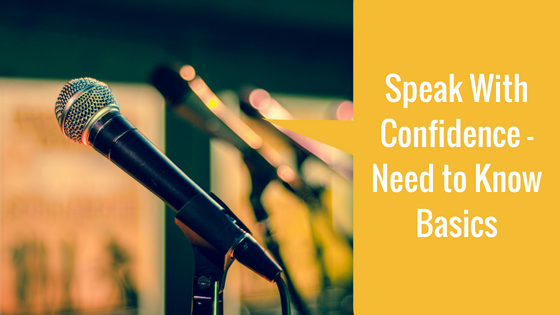
Developing a presentation can become overwhelming which is why we’ve outlined 6 easy to follow steps to ensure presentation gold.
Take the guesswork out of creating your next presentation with these 6 tips.
1. What is your purpose?
This may seem obvious, but taking the time to answer this question is key to your success. Outline what it is you are specifically looking to achieve; what is your goal? This could be a personal goal or one outlined by the organization requesting your presentation. Once you have identified your purpose for presenting, use it as your guiding light. When you write something, ask if helps you achieve your goal or not. If it does not, cut it or rewrite it until it does.
2. Who is your audience?
Now that you know what you’re looking to achieve, who are you presenting to? Understanding your audience, whether 1 or 1,000 in size, will determine your presentation format; the language you use, the examples you provide, the tone you take, etc.
Consider these questions about your audience before you begin:
- What are their motivations?
- What resonates with them?
- What do they know about that you can relate your presentation to?
- What is their existing knowledge of your presentation information?
- Why should they care about what you’re saying?
3. Start with an attention getter.
Whether your audience has elected to attend or was required to attend your presentation, you should hope to entertain them in order to engage them during your presentation. You don’t have to be a comedian or disingenuine; the purpose is to introduce your topic and intrigue your audience to want to listen.
Try beginning with a quote, story, statistic, theme, or analogous situation that relates to your main topic or illustrates your main point (whether the audience knows it yet or not). Or perhaps a question? According to Cognitive Neuroscientist, Carmen Simon, “questions guarantee engagement.”
Your introduction can also provide you with a way to conclude your presentation by returning to your story and highlighting an aha moment.
4. Give them a preview, outline, or map of your presentation.
One of my favorite speech guidelines is “tell them what you’re going to tell them; tell them; then tell them what you told them” because it is a beautifully simple and accurate way to think about a presentation. After you have your audience’s attention, you want to describe why they should care; what’s in it for them; what benefit they receive by listening/taking the action you request. You want to provide an overview of what you’ll be discussing. It can be an agenda, thesis statement, or general goal.
This is also an opportunity to establish credibility, whether for yourself as a presenter or authority on the topic, or for the importance of the topic you’re discussing in general.
5. Go into your main point(s).
Again, with your goal in mind, identify 3-5 main ideas for your presentation. If your goal is to sell or persuade, what does your audience need to know and want to know in order to persuade them to take action? What are the common objections? How will this product or service improve their life? From your answers, develop your points. Share stories whenever possible to prove your points because people remember stories not statistics.
6. Conclude.
Restate the importance of your information/product/presentation and recap your main points/goal/outline. Tell them what you told them – what are the key takeaways you want your audience to remember? State them clearly.
Then, provide a memorable ending; tell a story that illustrates your point, use a quote, or tie back to your introduction.
Congratulations!
You have a yourself a lovely presentation sure to impress. Now learn how to Speak With Confidence.

